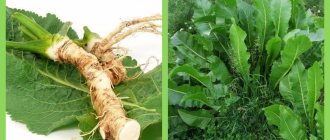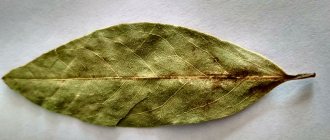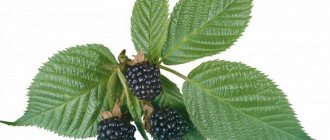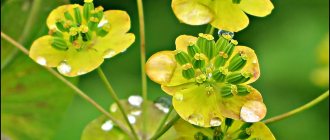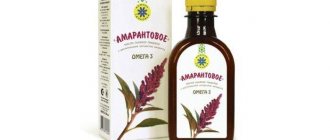How do you know if you have cinnamon and cassia? What are the differences?
The cinnamon sticks now sold in supermarkets are cassia. This is not deception of buyers. After all, both of these products are considered cinnamon. Cassia can be distinguished from cinnamon in several ways. Now we will look at them. So, what are the differences between cinnamon and cassia?
The second sticks are less twisted than those of cinnamon.
The manufacturing country is China. Cinnamon is grown in Sri Lanka.
Cassia is less expensive than cinnamon.
In terms of taste, cassia is slightly inferior to cinnamon. But it also has a pleasant spicy smell. It is sweet, but more pungent, unlike cinnamon, which has a mild taste. Cinnamon and cassia differ in color. The second has a darker, more saturated color than the first. Cinnamon sticks are very fragile and crumbly. When exposed, they turn into powder. Cassia sticks are hard tree bark. To turn it into powder, you have to work hard. You can tell the difference between cinnamon and cassia using iodine. Now we’ll tell you exactly how. Cassia contains a large amount of starch. A drop of iodine will turn it dark blue, and a drop of cinnamon will turn it light blue.
Harm and benefits of cassia
One of the disadvantages of cassia is the coumarin it contains. It is contraindicated for humans in large doses. If the daily norm of coumarin is exceeded, headaches and dizziness may begin. Cassia should be used with caution by people suffering from kidney and liver diseases. In large doses, it can cause diarrhea and allergic skin irritations. An adult can consume half a teaspoon of cassia per day, a child - two to three times less. It is not advisable to eat cassia all the time. Since the coumarin contained in it tends to accumulate in the body. Cassia and its preparations based on it are contraindicated during pregnancy, as they can cause abortion.
Now let's look at the beneficial properties of cassia. This plant helps improve appetite and improves blood flow. Cassia also has a laxative effect.
Losing weight. Reviews
The laxative effect allows you to use cassia for weight loss. Feedback from the application is only positive. Girls really get rid of a couple of extra pounds in a fairly short period of time.
Herbal tea for weight loss with cassia and mint effectively and gently rids the body of toxins and waste, helps improve skin color, weight loss, and has a painless effect on the intestines. This drink should be consumed in a course, be sure to take a break of one or two months, if necessary again.
Cassia for weight loss
Before you start taking senna for weight loss, pay attention to how your body reacts to the drug. If you feel discomfort and pain in the intestines, this is not your way to lose extra pounds. No acute reaction - take Alexandria leaf for 5-7 days. Effect: loss of 2-4 kilograms. But they may come back, taking with them a couple of new ones, if you break your diet.
To lose weight, nutritionists advise not to take pharmaceutical preparations based on senna, but to make decoctions of several medicinal herbs. On sale you can also purchase ready-made medicinal preparations based on the Alexandria leaf.
Here are some effective and gentle herbal tea recipes from herbalists:
- Take 10 grams of crushed cassia leaves, parsley, dandelion and medicinal chamomile. Add 5 grams of peppermint and dill seeds to the mixture. Brew a tablespoon of the mixture with 200 milliliters of boiling water, cover it for two to three hours. After eating, take the entire portion of the infusion in small sips. From the second week, drink two glasses of healing tea. Complete the monthly course with an initial dose of 1 glass after meals.
- Mix 100 grams of dried senna leaves with prunes and dried apricots (pass 400 grams of dried fruits through a blender or meat grinder), add 5 tablespoons of honey to the mixture. Daily norm: a teaspoon of the mixture before a night's rest.
- Take cassia seeds and raisins in a ratio of 100 grams to 200. Leave in boiling water for two hours. Add a liter of boiled water and a quarter liter of Kholosas syrup to the composition. Place the mixture in the refrigerator. Consume 100 grams before each meal.
- “Altai No. 3”, ready-made herbal tea based on senna (laxative effect), coriander and corn silk (choleretic effect), mint (antispasmodic). Pharmacy tea for weight loss is supplemented with rose hips - a storehouse of vitamin C. Take 1 glass of this tasty and aromatic drink for 30 days.
- "Altai tea No. 24", a harmonious combination of natural ingredients. The laxative effect of cassia is softened by chamomile (relieves gas formation in the intestines and inflammatory processes). Schisandra and green tea strengthen the body's defenses and restore energy after physical activity.
According to reviews, “Altai Tea” No. 3 is more suitable for those losing weight who are prone to stool retention. But when taking it, many people report flatulence and stomach cramps. In this case, it is more advisable to switch to a similar product number 24. It is indicated for those who are constantly involved in fitness - herbal tea for weight loss with cassia tones and restores strength.
Holly
Cassia aculifolia is a perennial shrub of the legume family, also called senna. Its homeland is India and Africa. The plant is cultivated in Central Asia, Pakistan, Egypt and Crimea. The leaves of this bush are harvested. They are collected in August. Fruits that ripen after flowering are rarely used.
Now let’s look at the harm and benefits of cassia holly.
Senna leaf has laxative and diuretic properties. Preparations based on Cassia aculifolia are used to treat diseases of the gastrointestinal tract, skin diseases, edema, and glaucoma.
Botanical characteristics of Cassia
Cassia is a perennial plant that blooms from July to late autumn. The flowers are yellow, numbering five petals, with ten stamens of different sizes located in the center and a curved pistil. Senna leaves are dense, elongated, arranged in pairs, opposite each other, on a long stem. A month after flowering, the fruit develops - a bean pod 5 to 6 centimeters long. The yellow seeds are flat in shape.
Cassia is a southern plant that grows in India, Arabia and Asia. In our latitudes, this shrub is grown artificially as an annual plant.
Article on the topic: Ammi toothpaste - beneficial properties, description
Medicinal preparations based on cassia, methods of use
The drugs are the following:
- Cassia aculifolia extract, tablets (laxative). Should be taken twice a day, morning and evening, thirty minutes before meals, one or two tablets.
- Antihemorrhoidal tea. A mixture of herbs. Pour one tablespoon of boiled hot water into glasses, let it brew, strain. Drink half a glass of tea in the morning and evening.
- "Senadexin" - tablets that contain cassia aculifolia. The drug should be taken in the evening, one or two tablets, with water. Senadexin is taken once or in a course of one to two weeks as needed. You need to take a break from taking it for two weeks.
Recipes for preparing medicines from senna
Senna leaves are prepared as a cold or hot infusion. When preparing a cold infusion, crushed leaves (2 g) are poured into a glass of boiled water at room temperature and left overnight. In the morning, filter and take as a laxative. When preparing a hot infusion, pour boiling water over 1 tablespoon of leaves, heat in a water bath for 15 minutes, leave for 45 minutes, filter and take 1 tablespoon 1-3 times a day.
To get rid of resins, you need to strain the infusion through a fine sieve. The fruits contain practically no resins, so their effect is more gentle. In recommended doses, senna is safe, but its use still requires compliance with certain rules. Senna is usually taken for a short time, as needed. But it is not suitable as a constantly taken remedy; the use of senna preparations should not exceed 1, maximum 2 weeks.
Harm and benefit
What are the harms and benefits of cassia aculifolia for the body? Decoctions from the leaves of the plant are recommended to be used to stimulate appetite, improve the functioning of the gastrointestinal tract, and also to treat hemorrhoids. Cassia essential oil has beneficial properties. It is recommended for stress and depression. Cassia oil is used to lubricate the skin for insect bites. This promotes rapid healing. Unlike cassia decoctions, the oil has an astringent effect. It is used to treat diarrhea. The oil is used as an antispasmodic and anti-inflammatory agent.
There are contraindications for use. Cassia and drugs based on it should not be used continuously. Because the body gets used to the action of the herb. Then the treatment becomes ineffective. Senna leaf is contraindicated for diarrhea and intestinal inflammation.
Use of senna in folk medicine
Taking senna as a laxative has its own characteristics. Remember that if you have spastic constipation (intestinal spasms), it is better not to use senna. In case of atonic constipation (weakness of peristalsis), this herb will be just right. In pharmacology, senna is used in the form of laxative teas, which are produced in filter bags, or tablets, as well as dried leaves of the plant. It should not be confused with hay dust, which is prepared from hay and is used in the treatment of skin diseases.
The tablets contain senna extract and are available under the names:
Tablets can be given to children from the age of 6 years. The dosage varies from one to two tablets per day. Adults can take up to four tablets per day. The dosage depends on the goals of treatment. It is better to consult a doctor. Remember that you should not take senna for more than a week. Since it removes fluid from the body, during the period of treatment with hay it is necessary to ensure that the water balance in the body is maintained at a sufficient level. To do this, drink more water. Fiber is as necessary as water when taking senna.
While taking the pills, bowel movements become regular. If there has been no bowel movement for two days, then stop taking senna.
Senna is used to treat diseases of the liver and gall bladder. In small doses, this remedy will also improve digestion. In large doses, senna causes diarrhea.
Since senna has bactericidal properties, it is used in cosmetology and the treatment of infectious and skin diseases. Arabian healers sprinkled the powder of this miracle herb on the wounds of warriors. Senna is capable of destroying pathogens of infectious diseases such as staphylococci and streptococci. Therefore, the eyes are washed with purulent infections with an infusion of senna leaves. Senna is also used to purify the blood.
In gynecology, senna is used to restore the periodicity of menstruation (oligomenorrhea)..
Pharmacies have cassia essential oil. Getting the medicine is quite simple: it is squeezed out of all parts of the plant. The oil is applied to the skin to treat dermatological diseases and for cosmetic purposes. It will help relieve inflammation and pain from insect bites (bees, wasps, bumblebees). The range of uses of the oil is wide: from treating intestinal diseases and inflammation of the oral cavity to relieving symptoms of stress, depression, fear, and nervous exhaustion.
How to make your own senna medicine
It is not difficult to prepare senna medicine at home. Pay attention to several recipes for common diseases.
Method for preparing senna decoction
- Place 1 tablespoon of senna leaves into a container.
- Pour a glass of boiling water
- Boil in a water bath for 30 minutes.
- Infuse the broth for another 30 minutes.
- Strain and take 100 ml before bed.
Since the decoction lasts for 10 hours, you will have stool in the morning.
A decoction of senna leaves is an excellent laxative.
Senna infusion recipe
- Place 2 tablespoons of dried senna herb into a small thermos.
- Pour a glass of boiling water.
- Leave for 6 hours.
Take 1 tablespoon of infusion 15 minutes before meals 3 times a day.
An infusion of senna leaves is good for constipation.
How to make iced senna tea
This is a mild laxative, which is taken one glass at night. This method of preparation ensures that you will be free from pain and discomfort in the gastrointestinal tract when taking senna.
- Place 1 teaspoon of senna leaves in a glass
- Fill the senna collection with cold water in the volume of a glass.
- Insist for 24 hours.
- Strain the resulting infusion.
Collection against hemorrhoids
Mix herbs in equal proportions: senna leaf, licorice root, buckthorn bark, coriander fruit, yarrow. Pour one tablespoon of the mixture into a glass of boiling water. Leave for 15–20 minutes. Strain, take half to one glass at night.
Laxative for constipation
- senna (leaves) – 30 g,
- common yarrow (herb) – 10 g,
- buckthorn (bark) – 20 g,
- Zhoster (fruit) – 20 g,
- anise (fruit) – 30 g,
- licorice (root) – 30 g
Directions for use: Brew a tablespoon of the mixture in a glass of boiling water, leave for 20 minutes, strain through cheesecloth. Take half or three quarters of a glass at night for constipation.
Composition for weight loss
- senna - 100 g,
- dried apricots - 100 g,
- prunes - 100 g,
- raisins - 100 g,
- figs - 100 g,
- honey - 100 g.
Article on the topic: Actinidia kolomikta - beneficial properties, description
Grind the dried fruits using a meat grinder or blender, add honey and senna, mix well. Take 1 teaspoon of the mixture at night with a full glass of water. Store the mixture in the refrigerator. Senna in this composition is used when intending to lose weight . However, keep in mind that with long-term use of drugs containing senna, beneficial substances are washed out of the body. Therefore, if you decide to lose weight, then lose weight without fanaticism - take the drugs for no more than a month, 1-2 times a year.
Yeah! It's in the refrigerator. It’s just impossible to eat it. Such rubbish is because of the grass... this taste and smell. I swallow it like pills, rolling it into balls. But lately I’ve been on a diet of separate meals, stool on its own as many as 2 times a day.
Amelie stranded
https://galya.ru/clubs/show.php?id=206202 Galya.ru
These are the conflicting reviews on the Internet. One thing is certain: if you want to improve your bowel movements and lose weight, try softer means, such as separate meals, diets with plenty of fiber, move more, and exercise. The result will not take long to arrive!
Features of use during pregnancy and breastfeeding
Since senna contains some substances harmful to the body, it is not recommended to take it during pregnancy. Consult your doctor to avoid harm to the fetus. In case of an overdose of senna, a pregnant woman experiences spasms of the uterine muscles, which can lead to miscarriage. When breastfeeding, taking senna is also undesirable, as the baby will suffer from diarrhea.
Senna preparations are addictive, so taking them for a long time is undesirable. The body gets used to stimulation from the outside, so its ability to function correctly without external influences decreases. The large intestine becomes thinner, becomes sluggish and atonic.
Pregnant women should take herbal teas with extreme caution
Features of the use of senna in children
Can senna preparations be given to children? Parents complain that when taking products based on this plant, children experienced side effects such as diarrhea, vomiting, and severe pain (cramping) in the abdomen.
Is it possible to give a weak senna decoction to a 2 year and 5 month old child? My son has pinworms, the doctor prescribed Pyrantel and told him to take the laxative Duphalac. I can't stand him. The child immediately has abdominal pain and constantly sits on the potty. Maybe you can recommend something else?
Vika
https://www.woman.ru/kids/infant/thread/4276477/ © Woman.ru
Author, you're getting wet. Have you tried this hay yourself? I - yes, the pain is unbearable.
Woman in ed.
https://www.woman.ru/kids/infant/thread/4276477/ © Woman.ru
Since senna contains some resins, it causes colic in children. For this reason, senna is not recommended for use in young children (under 6 years of age).
Please also note that abdominal pain can be avoided if you filter the cold cassia infusion through gauze. This way, the resins will remain in the gauze, and the infusion will become safe. Some people do experience side effects associated with taking senna. These are possible consequences of overdose, long-term use or individual intolerance to this drug.
What side effects are possible when taking senna drugs?
Despite all the enormous benefits of the plant, there is a list of some types of ailments that may appear as a result of consuming the herb:
- spasms;
- sharp pains (cuts);
- nausea;
- vomit;
- diarrhea;
- bloating;
- brown coloration of urine and intestinal walls.
From the nervous system:
- dizziness;
- confusion;
- arrhythmia;
- convulsions.
Senna is prohibited for people suffering from gallstone disease and gastrointestinal ailments in the acute phase. Not recommended for pregnant women and young children under 6 years of age.
Video with Elena Malysheva about three ways that will allow you to say goodbye to constipation
Now you know that senna is used as a laxative for intestinal atony, as a disinfectant for skin diseases, and also as a means for losing weight. Before using medications based on this plant, consult your doctor, as this remedy is contraindicated for patients with certain diseases. It is prescribed with caution to pregnant women and young children.
Application of Cassia Alexandrina
Preparations from Cassia Alexandria, infusions and decoctions from it are used:
- for hemorrhoids, anal fissures,
- for some diseases of the liver and gallbladder,
- skin diseases,
- conjunctivitis,
- purulent skin lesions, pyoderma.
It is not recommended to take tinctures and decoctions of Cassia Alexandria if there are exacerbations of inflammatory processes in the intestines, during pregnancy, liver disease, or cystitis. When using cassia for weight loss, you should alternate it with other laxatives in order to achieve a better effect and prevent addiction.
Recipes for making infusions and decoctions at home. Description, methods of application
First, let's look at the infusion recipe. Pour one tablespoon of cassia leaf into a glass of hot water and let it brew for eight hours. Afterwards you need to strain. Take half a glass before bed.
Now let's look at the decoction recipe. Pour two tablespoons of leaf into a quarter liter of hot water. Then you should let it brew in a water bath for thirty minutes, then cool and strain. Dilute with hot water to the initial level, take half a glass of the decoction in the morning and evening.
Weight loss occurs due to improved intestinal function and increased motor functions. It is important to remember that everything is good in moderation. By overdoing it with medications, decoctions or infusions, you can get an upset stomach and abdominal pain. Before starting a course of treatment with cassia at home, you should consult your doctor.

